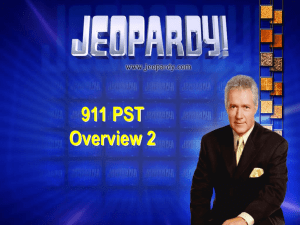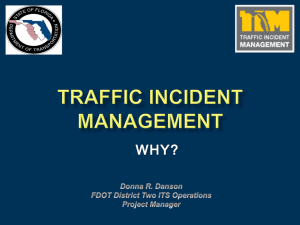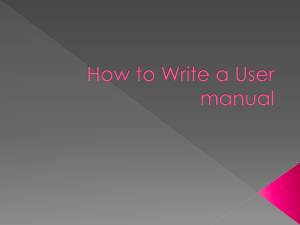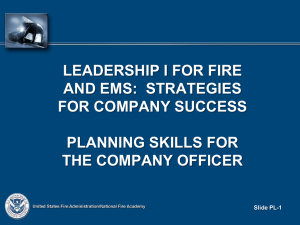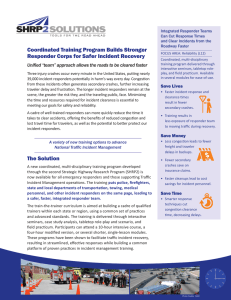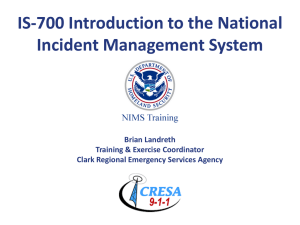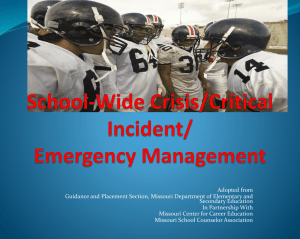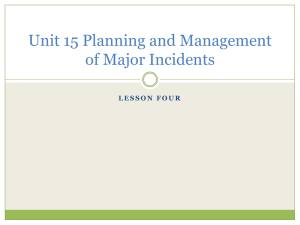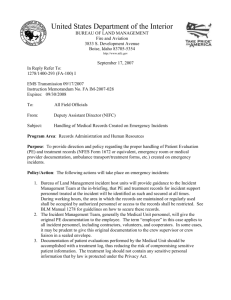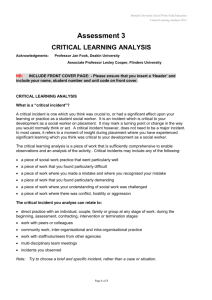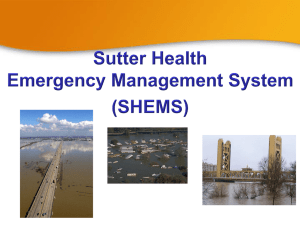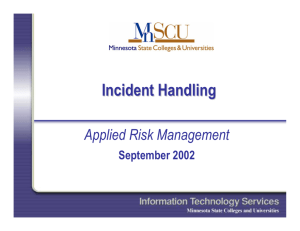Communication, Coordination, and Cooperation (3C`s) Among
advertisement
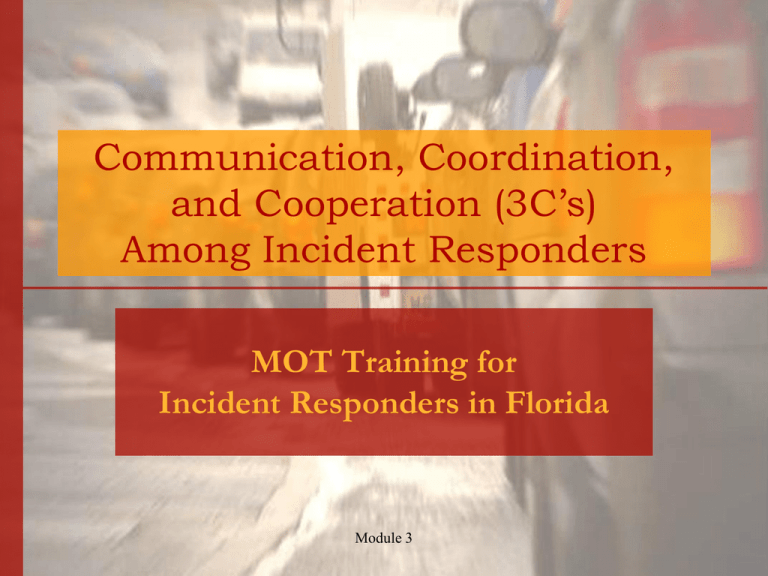
Communication, Coordination, and Cooperation (3C’s) Among Incident Responders MOT Training for Incident Responders in Florida Module 3 Communication, Coordination, and Cooperation • Communication – exchange of information among organizations – better understanding of each other • Coordination – working together to achieve a goal (efficiently) – decreases overlap, redundancy, and/or separation • Cooperation – work side-by-side with the group (be a “team player”) Module 3 Effective Incident Response Incident responders need to: • Fulfill responsibilities under the law, and accomplish necessary actions without exceeding their statutory authority. • Understand the priorities, needs, limitations, and expertise of all other involved agencies. • Coordinate and cooperate closely with all response agencies to mitigate such incidents. Module 3 Detection & Verification • Detection – the determination that an incident had occurred (includes the relay of information to the appropriate response agencies) • Verification – the determination of the precise location and nature of the incident Module 3 Response & Clearance • Response – the activation, coordination, and management of all appropriate personnel, and equipment • Clearance – the opening of all lanes Module 3 Management Function Under an Interagency Incident Management structure, the question isn’t so much “Who’s in charge?” but “Who’s in charge of what?” Module 3 Module 3 Video: The Many HATS of Highway Incident Management Unified Incident Management • Agencies participate by: – – – – – – Cooperating in determining overall goals and objectives Conducting joint preparation for operational activities Conducting integrated operations Providing integrated communications between all agencies Maximizing use of all available resources Recognizing the value of the services of every involved agency – Ensuring that individual or organizational egos do not enter the equation Module 3 Traffic Incident Management Goals • Reduce incident-related congestion • Improve response and clearance times • Prevent secondary collisions • Improve traffic flow and air quality • Decrease the economic impact of incidents and, most important… • Improve responder and motorist safety Module 3 Source: I-95 Corridor Coalition – Toolkit and Workshops for Quick Clearance KEY! • Communications • Coordination • Cooperation • Consensus Module 3 Source: I-95 Corridor Coalition – Toolkit and Workshops for Quick Clearance END Question or Comments Module 3

